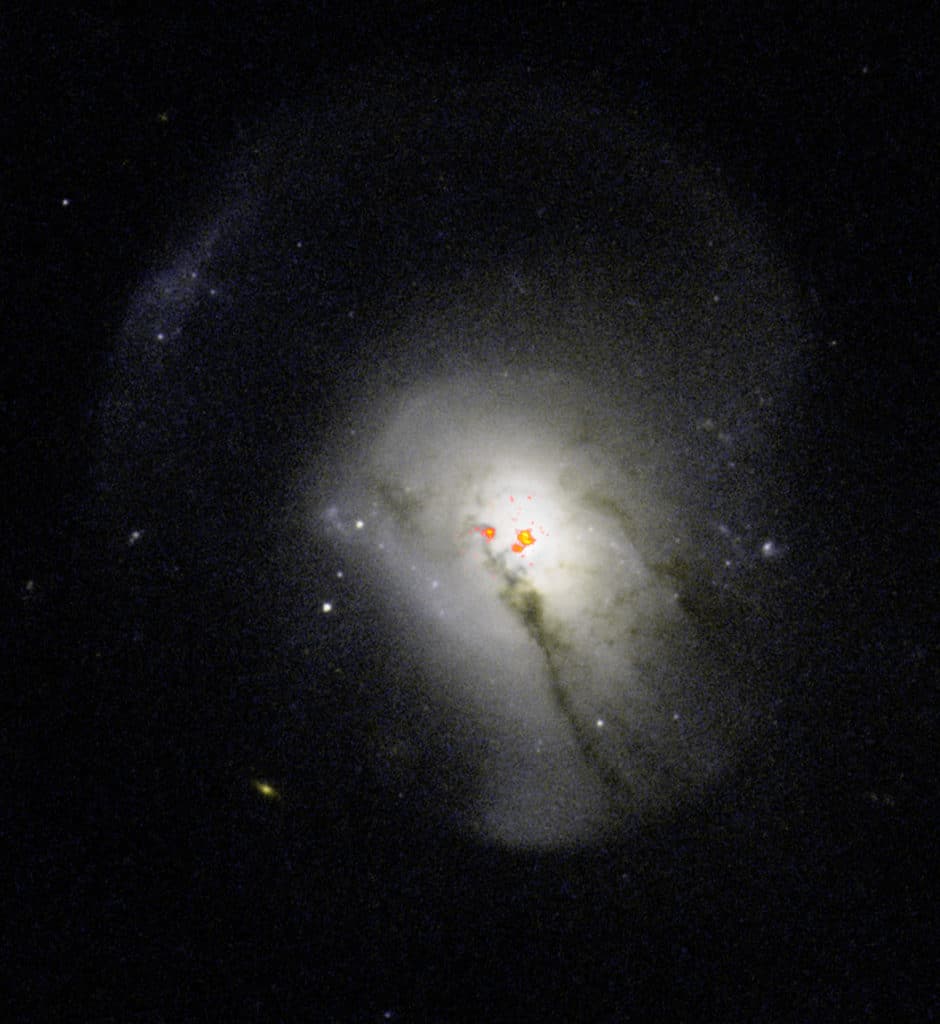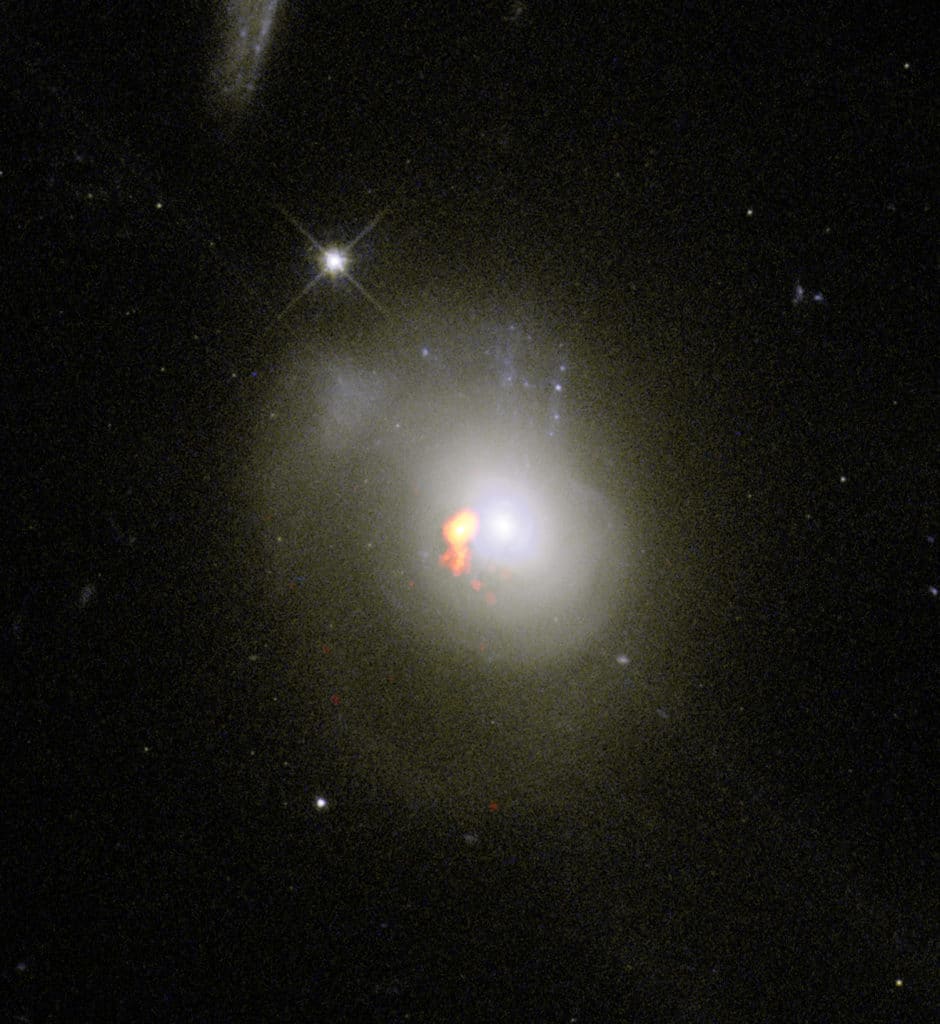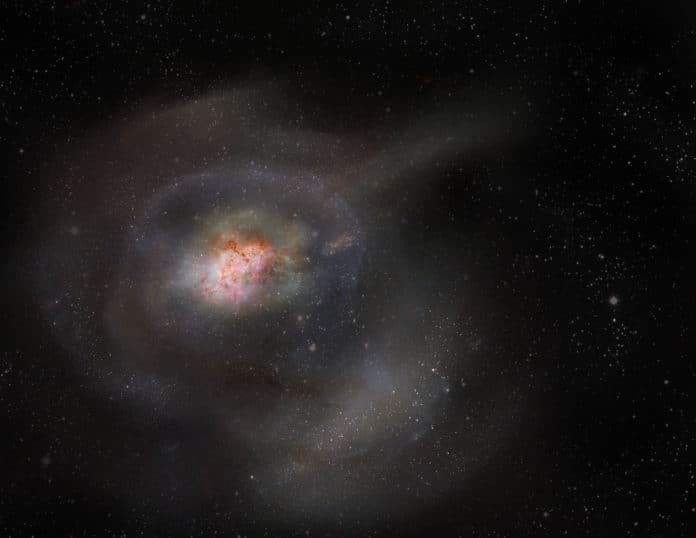Post-starburst (PSB) galaxies represent a rapid transitional phase between major, gas-rich mergers and gas-poor, quiescent early-type galaxies.
Post-starburst galaxies were previously thought to scatter all of their gas and dust, which is the fuel required to create new stars in violent bursts of energy and extraordinary speed.
New data from the Atacama Large Millimeter/submillimeter Array (ALMA) reveals that these galaxies don’t scatter all of their star-forming fuel. Instead, these dormant galaxies hold onto and compress large amounts of highly-concentrated, turbulent gas after their supposed end.
While it is expected that it should be the favorable conditions for star formation, it doesn’t seem so in the case of PSB galaxies.
What makes PSBs different?
PSBs are different from other galaxies because they are born in the aftermath of violent collisions or mergers between galaxies. Galaxy mergers typically trigger massive bursts of star formation, but in PSBs, this outburst slows down and near-completely stops almost as soon as it begins.
As a result, scientists previously believed that little or no star-forming fuel was left in these galaxies’ central star-forming factories. Till now, it was believed that the molecular gases had been redistributed to radii well beyond the galaxies, either through stellar processes or by the effects of black holes.
But current results are challenging this theory.

“We’ve known for some time that large amounts of molecular gas remains in the vicinity of PSBs but haven’t been able to say where, which in turn, has prevented us from understanding why these galaxies stopped forming stars. Now, we have discovered a considerable amount of remaining gas within the galaxies and that remaining gas is very compact,” said Adam Smercina, an astronomer at the University of Washington and the principal investigator of the study. “While this compact gas should be forming stars efficiently, it isn’t. In fact, it is less than 10-percent as efficient as similarly compact gas is expected to be.”
In addition to being compact enough to make stars, the gas in the observed dormant—or quiescent—galaxies had another surprise in store for the team: it was often centrally-located, though not always, and was surprisingly turbulent. Combined, these two characteristics led to more questions than answers for researchers.
“The rates of star formation in the PSBs we observed are much lower than in other galaxies, even though there appears to be plenty of fuel to sustain the process,” said Smercina. “In this case, star formation may be suppressed due to turbulence in the gas, much like a strong wind can suppress a fire. However, star formation can also be enhanced by turbulence, just like wind can fan flames, so understanding what is generating this turbulent energy, and how exactly it is contributing to dormancy, is a remaining question of this work.”

Decker French, an astronomer at the University of Illinois and a co-author of the research, added, “These results raise the question of what energy sources are present in these galaxies to drive turbulence and prevent the gas from forming new stars. One possibility is energy from the accretion disk of the central supermassive black holes in these galaxies.”
J.D. Smith, an astronomer at the University of Toledo and a research co-author, said, “There is much about the evolution of a typical galaxy we don’t understand, and the transition from their vibrant star-forming lives into quiescence is one of the least understood periods. Although post-starbursts were very common in the early Universe, today they are quite rare. This means the nearest examples are still hundreds of millions of light-years away, but these events foreshadow the potential outcome of a collision, or merger, between the Milky Way Galaxy and the Andromeda Galaxy several billion years from now. Only with the incredible resolving power of ALMA could we peer deep into the molecular reservoirs left behind ‘after the fall.'”
Smercina added, “It’s often the case that we as astronomers intuit the answers to our own questions ahead of observations, but this time, we learned something completely unexpected about the Universe.”
Turbulence is the culprit: Conclusion of Study.
Study results confirm that the interstellar medium conditions and distribution in these PSBs are unlike normal galaxy populations. Understanding the mechanism driving the turbulent heating of their interstellar medium and whether this mechanism can maintain the low star-formation efficiency until the remaining gas is consumed, or rendered ineffective for star formation in a future evolutionary state, is of continued importance. The apparently paradoxical state of the gas and star formation in these unique systems may provide a blueprint for understanding how star formation is quenched and regulated in galaxies ‘after the fall’.
The study concluded that turbulent support in the interstellar medium is a likely culprit for this star formation suppression. Over what timescales this turbulent suppression could persist or its driving mechanism remains unclear.
Journal Reference
- Adam Smercina, John-David T. Smith, K. Decker French, Eric F. Bell, Daniel A. Dale, Anne M. Medling, Kristina Nyland, George C. Privon, Kate Rowlands, Fabian Walter, Ann I. Zabludoff. After The Fall: Resolving the Molecular Gas in Post-Starburst Galaxies. Astrophysics of Galaxies (astro-ph.GA) DOI: 10.48550/arXiv.2108.03231
